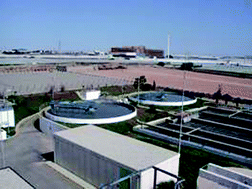Solid-phase extraction followed by liquid chromatography–time-of-flight–mass spectrometry to evaluate pharmaceuticals in effluents. A pilot monitoring study
Abstract
The present work provides a multi-residue analytical method for determining a selection of 20 pharmaceuticals from diverse therapeutical classes in hospital effluent wastewater. The method is based on the simultaneous extraction of the target compounds by solid phase extraction (SPE), followed by liquid chromatography–time-of-flight–mass spectrometry (LC–TOF–MS) analysis. Using TOF–MS, accurate mass measurements within 2 ppm error were obtained for most of the pharmaceuticals studied. Empirical formula information can be obtained by this method, allowing the unequivocal identification of the target compounds in the samples. Validation studies showed that LC–TOF–MS analysis is a valuable new tool for identification and quantification of pharmaceuticals in wastewater. Recoveries, using Oasis HLB cartridges at pH 7, were higher than 75% for all pharmaceuticals, except for ranitidine, 4-methylaminoantipyrine (4-MAA), cefotaxime and omeprazole, which needed specific pH conditions for their extraction. Linearity of response over two orders of magnitude was demonstrated (r > 0.99). Matrix effects resulting in suppression of the response were observed. For most of the compounds ion suppression was less than 39%, except for metronidazole, carbamazepine 10,11-epoxide, naproxen and erythromycin, where the signal suppression was 42%, 59%, 46% and 95%, respectively. A simple and effective approach to minimize or avoid matrix interferences was the 1 : 4 dilution of the SPE extracts. Method detection limits (MDLs) and quantification limits (MQLs) ranged between 4–115 ng l−1 and 14–384 ng l−1, respectively. The precision of the method, calculated as relative standard deviation (RSD), ranged from 1.1–19.8% and 1.7–21.7% for intra- and inter-day, respectively. The developed analytical method was applied to the analysis of hospital effluent wastewater during a survey study. 18 of the 20 pharmaceuticals studied were detected at concentration levels of μg l−1, reaching in some cases concentrations over 100 μg l−1, and in the case of the analgesic and antipyretic dipyrone metabolite, higher than 1000 μg l−1.


 Please wait while we load your content...
Please wait while we load your content...